Potting Soil, Fertilizer, and Seeds: How Long Do These Gardening Essentials Last?
Find out if you can use last year's materials in the garden this season.
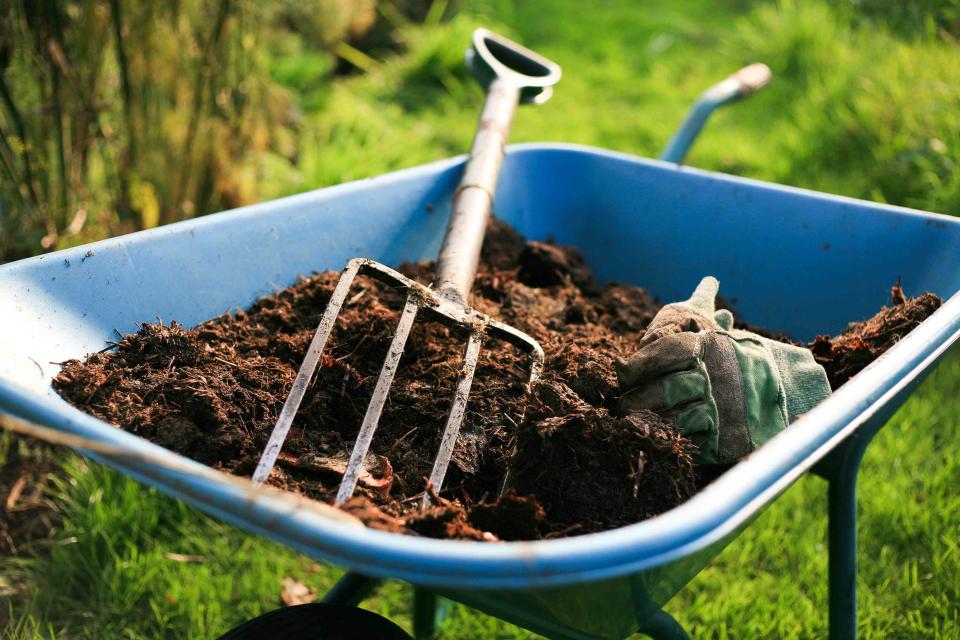
nixoncreative / GETTY IMAGES
Before you become a gardener, you admire other yards' lush lawns, fragrant flowers, and colorful vegetables and herbs. But once you start to hone your green thumb, you quickly realize that maintaining your outdoor oasis is an investment—in time and money. When another growing season rolls around, you're excited to dig in, but you're also mindful of your budget (and want to minimize waste). That's why you're probably wondering if you can reuse last season's garden necessities, from potting soil and fertilizer to seeds. Do you really need to replace them each year? Good news: You don't—so long as you do what you can to extend their shelf lives and store them correctly.
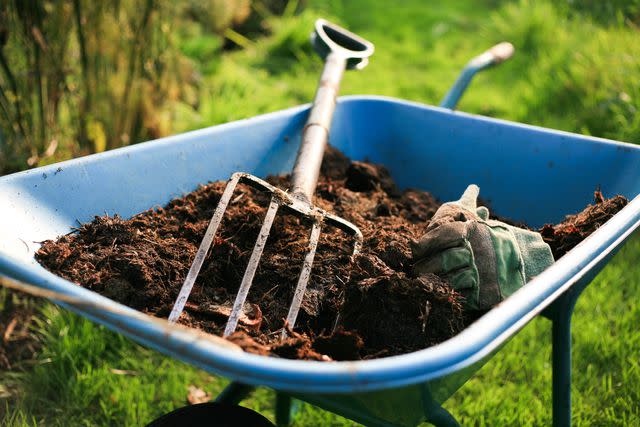
nixoncreative / GETTY IMAGES
Related: This Is How Martha Organizes and Stores Leftover Garden Seeds
How Long Potting Soil Lasts
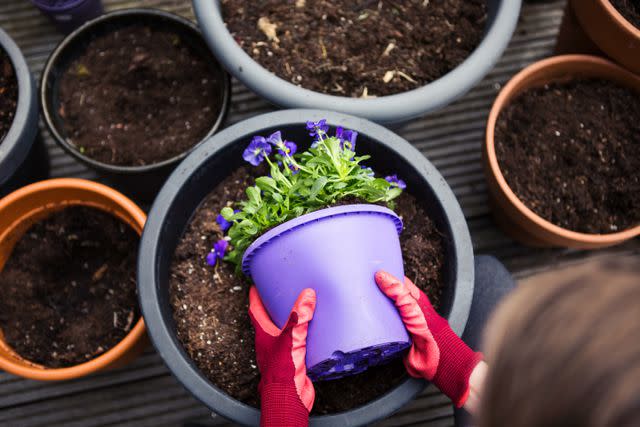
Elva Etienne / GETTY IMAGES
Lasts for: up to two years
If you have a container garden, you know that nutrient-rich potting soil is the secret to success. The growing matters provides "structure for root growth and will stabilize plants, helping them to stand upright," says Markah Frost, MS, a senior gardens specialist at Miracle-Gro.
Generally speaking, potting soil can last for upwards of two years; however, these bags are typically targeted to specific uses, which dictates how successful they are over an extended period of time. "For example, potting soil used for indoor plants like pothos or spider plants are most successful when you use a fresh bag of potting mix each year," Frost says, noting that it's best to use a fresh bag when working with annuals, as well.
If you want your soil to last longer, keep it in a plastic container or a garbage can where it will stay dry; this will also prevent mold or mildew from developing. "A sparkling interior is key—you don't want to put sterilized soil in a potentially contaminated container," Frost says.
Amending Old Potting Soil
Let's say you're set on using last year's potting soil for a houseplant or annual: Can you amend it to bring it back up to full strength? "If you want to reuse potting soil that you used for last year's annual plants, add a granular fertilizer," Frost says. "Last year's plants likely used up the available nutrients."
How Long Granular Fertilizer Lasts
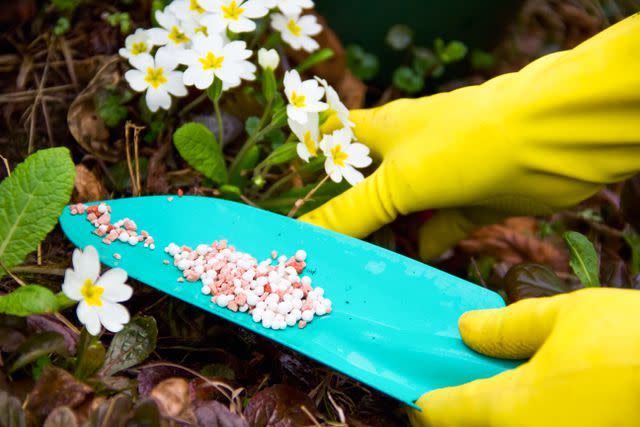
wihteorchid / GETTY IMAGES
Lasts for: up to a year; several years if unopened
You need food and water to live a healthy, active life—and so do your plants. They require nutrients to thrive, but most native soils lack the proper ratio of essential nutrients optimal for growth, says Sara Eff, MS, a garden scientist for Miracle-Go. "Plant food ensures the proper amount of nutrients are being supplied and can help the plants defend against environmental stresses," she says.
While fertilizer doesn't technically expire, granular fertilizer will remain at full strength for a year if stored in an airtight bag or in a container in your garage. If a bag isn't open, it will last several years—but check the label for specific product recommendations.
Buying new granular fertilizer, however, is ultimately best for you and your garden: "The longer the fertilizer sits unused, the more likely it is to become damp and clumpy, which could make it hard to spread,” Eff says.
How Long Liquid Fertilizer Lasts
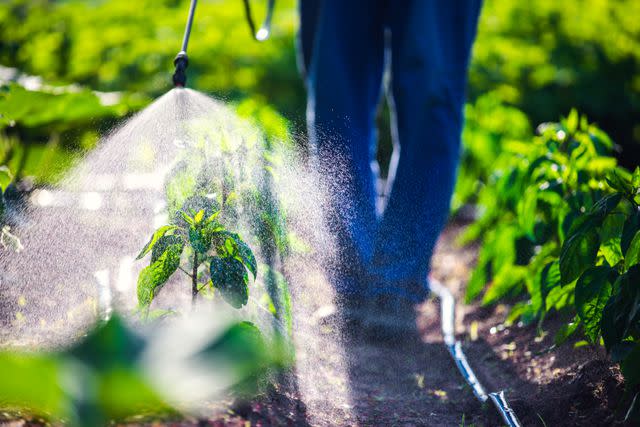
valio84sl / GETTY IMAGES
Lasts for: three to four years (or longer)
Though granular fertilizer needs to be replaced every year, liquid fertilizer typically has a much longer shelf life. Excess liquid fertilizer can be stored in a cool, dry place over the winter and used the next growing season. When stored properly, liquid fertilizer has a minimum shelf life of three to four years—but will often last much longer, says Eff.
If you've had your liquid fertilizer for a few years, though, keep a close eye on your plants—if they aren't as happy as usual, it might be time for a replacement. "To monitor the effectiveness of your liquid fertilizer, you can observe your plants for signs of nutrient deficiencies or excesses," Corbet says.
How Long Seeds Last
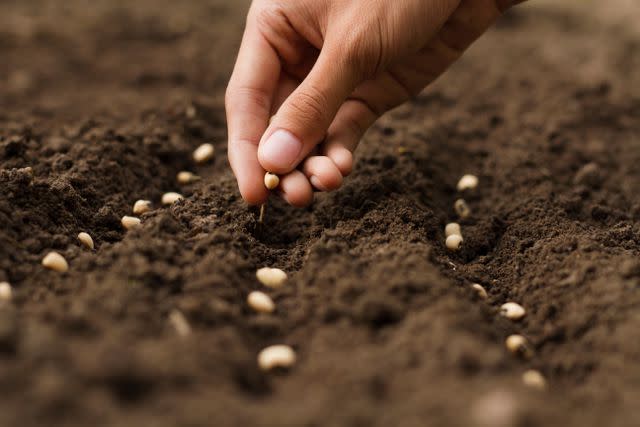
piyaset / GETTY IMAGES
Lasts for: one to two years
There are countless types of seeds—some produce flowers while others make vegetables, fruits, or herbs. Whether or not unused seeds make it through a calendar year depends on how you store them. Seeds typically have the best germination rates one to two years after purchase; keep them safe, however, and you'll be able to push that timeline a bit, Eff says.
"When storing seeds, ensure they are kept in a cool, dry place and not exposed to moisture, which can cause mold to grow and kill the seeds," Eff says. "However, the germination rate will decrease over time, so you may not get the same results you would if you were using fresh seed."
To set yourself up for success, make sure you're buying the best seeds. Follow these tips from Eff to do just that:
Research varieties to find the flavor, fit or color that is best for your garden.
Know your USDA hardiness zone and pick seeds that are suitable for your climate.
Align your seed to the season and make sure you're selecting seeds that will grow in the time of year you are planting them (so you don't store them for unnecessary periods of time).

